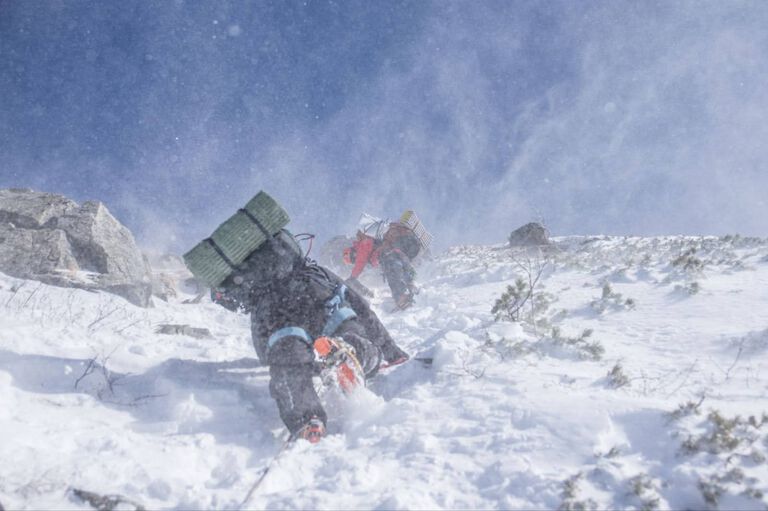Japan’s outdoors possess a distinctive charm. Throughout the seasons, its diverse landscapes, from the rugged Japanese Alps to the enchanting trails of Kumano Kodo, offer outdoor enthusiasts countless possibilities for an unforgettable adventure. Japan experiences distinct seasons, each offering different outdoor activities and scenery to enjoy, so planning your trip ahead of time is a good idea.
Whether you are hiking through peaceful trails or chasing the adrenaline with winter sports, taking some time to research your destinations and weather conditions will help you ensure a smooth and enjoyable experience throughout. Let’s explore some tips and tricks to help you plan the perfect outdoor adventure:
1. Research Japan’s Diverse Landscapes
Before embarking on your outdoor adventure in Japan, research the specific region you plan to explore. Each area has its own climate and terrain, so understanding the weather patterns and landscape will help you pack accordingly. Whether you're hiking in the Japanese Alps, exploring the ancient trails of Kumano Kodo, or strolling through the vibrant landscapes of Hokkaido, understanding the terrain and knowing what to expect is crucial.
2. Research Weather Patterns

Japan experiences four distinct seasons, each bringing its own set of weather conditions. It's crucial to research the specific weather patterns of your chosen destination and the time of year you plan to visit. Rainy seasons, typhoons, and sudden temperature changes are factors that can impact your outdoor plans. Stay informed about the local climate to make informed decisions about your clothing and gear. Always carry a compact emergency kit, including a first aid pack, emergency shelter, and extra food and water, especially for long hikes.
3. Master the Art of Layering
Japan's weather can be unpredictable, with sudden changes in temperature and conditions. The key to staying comfortable during your outdoor activities is the layering strategy. This involves wearing multiple layers of clothing that you can add or remove based on your body's needs and the environment. Remember to plan ahead of time and pack wisely for your journey in the outdoors:
● Outer Layer: The outer layer serves as a protective barrier against external elements such as wind, rain, snow, and cold temperatures. For milder weather conditions, go for a softshell jacket that is water-resistant and breathable. For severe weather conditions, a hardshell jacket made of water- and wind-proof materials would be ideal.
For more efficient and adaptable protection, especially during the winter months, consider Finetrack’s Double Shell® system. Two layers of shells, the Midshell® and the Outer Shell, combine to provide additional protection from the elements and prevent condensation from forming inside your layering system while still being breathable and comfortable.
● Mid-Layer: This layer adds warmth. Fleece jackets, down vests, and other insulating garments are your best friends. Choose the thickness and type of insulation depending on the severity of the cold.
● Base Layer: Accumulated sweat and moisture on your body can be uncomfortable at best and cause you to lose a dangerous amount of heat at worst. A base layer with moisture-wicking materials like merino wool or high-tech synthetics will keep you dry and help you retain your body heat. Hybrid materials offer the best of both worlds.
● Elemental Layer®: Even the best base layers can take some time to dry. During this time, you may experience discomfort and chills as your skin is in contact with a damp base layer, especially when you are at rest. Addressing this common challenge faced by outdoor adventurers, the Elemental Layer® by Finetrack is proving to be an invaluable addition to the layering system.
Designed to work seamlessly with your base layer, the Elemental Layer® is a water-repellent, fine mesh layer meant to be worn directly on your skin. Its fine mesh material allows sweat to be absorbed by your moisture-wicking base layer while creating a dry shield between the skin and the damp base layer. This means the Elemental Layer® protects the wearer from discomfort, chills and unnecessary heat loss while the base layer dries off.

4. Special Permits and Reservations:
Some outdoor activities, such as camping in certain areas or accessing specific trails, may require permits or reservations. Planning in advance ensures you have the necessary documentation and permissions for your hike, preventing disappointment upon arrival. When exploring unfamiliar terrain seek advice from experienced hikers, tour guides, or outdoor enthusiasts familiar with the area. They can provide insights into hidden gems, safety precautions, and the best times to explore.
5. Respect Cultural Norms
Japan places a high value on nature and environmental conservation. Proper preparation includes respecting local customs, adhering to Leave No Trace principles, and ensuring you leave the natural beauty unspoiled for future generations. If you come across a shrine in the outdoors, be respectful, refrain from loud conversation, do not enter restricted areas or climb on structures.
An outdoor adventure in Japan can be an enriching experience, allowing you to connect with nature and explore the country's diverse landscapes. By doing your research and planning ahead, you'll be well-equipped to tackle any challenges that may arise during your adventures.
Remember to research your journey, pack wisely using the layering strategy, and embrace the unique charm of Japan's outdoor wonders. Happy adventuring!
